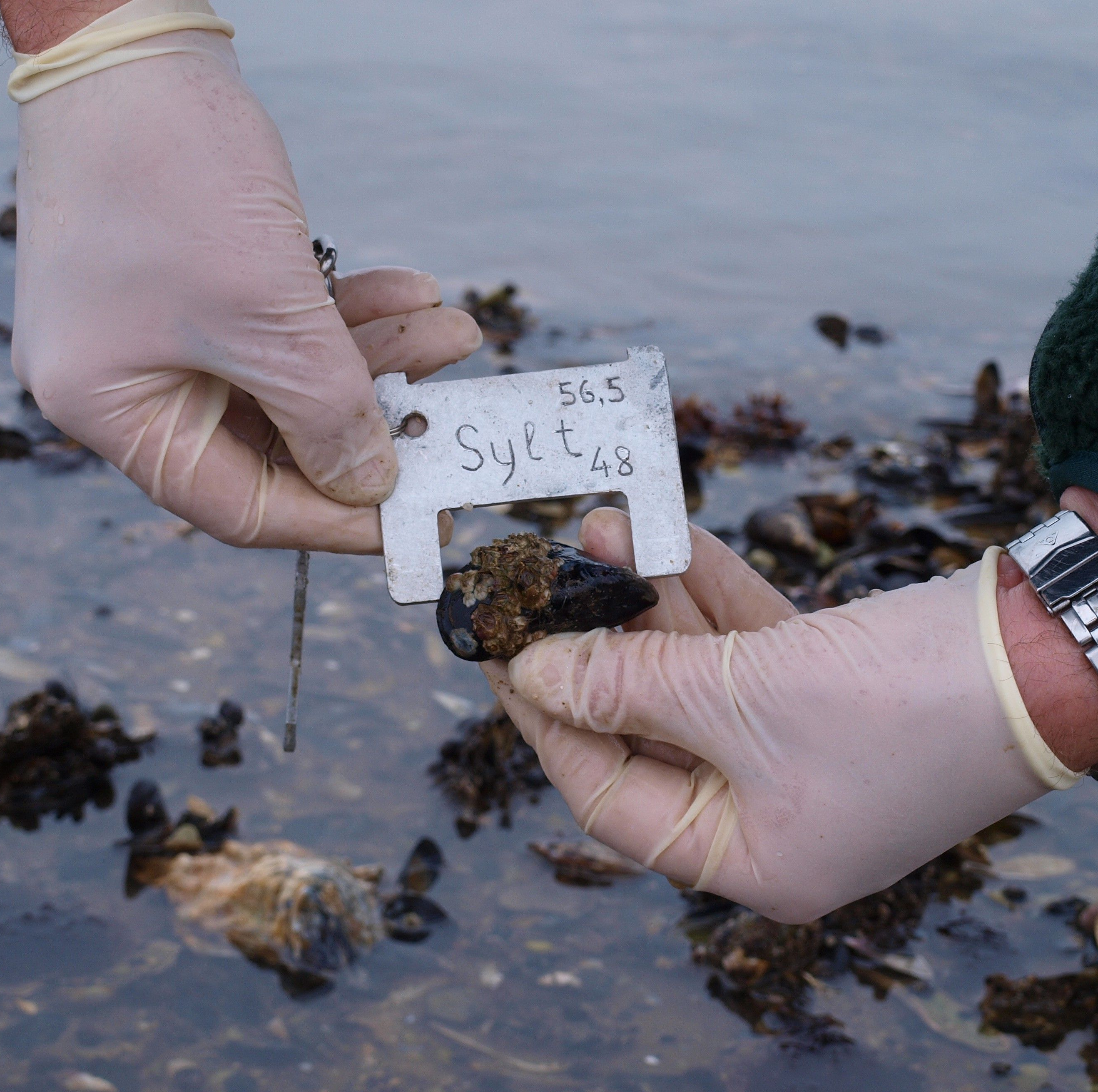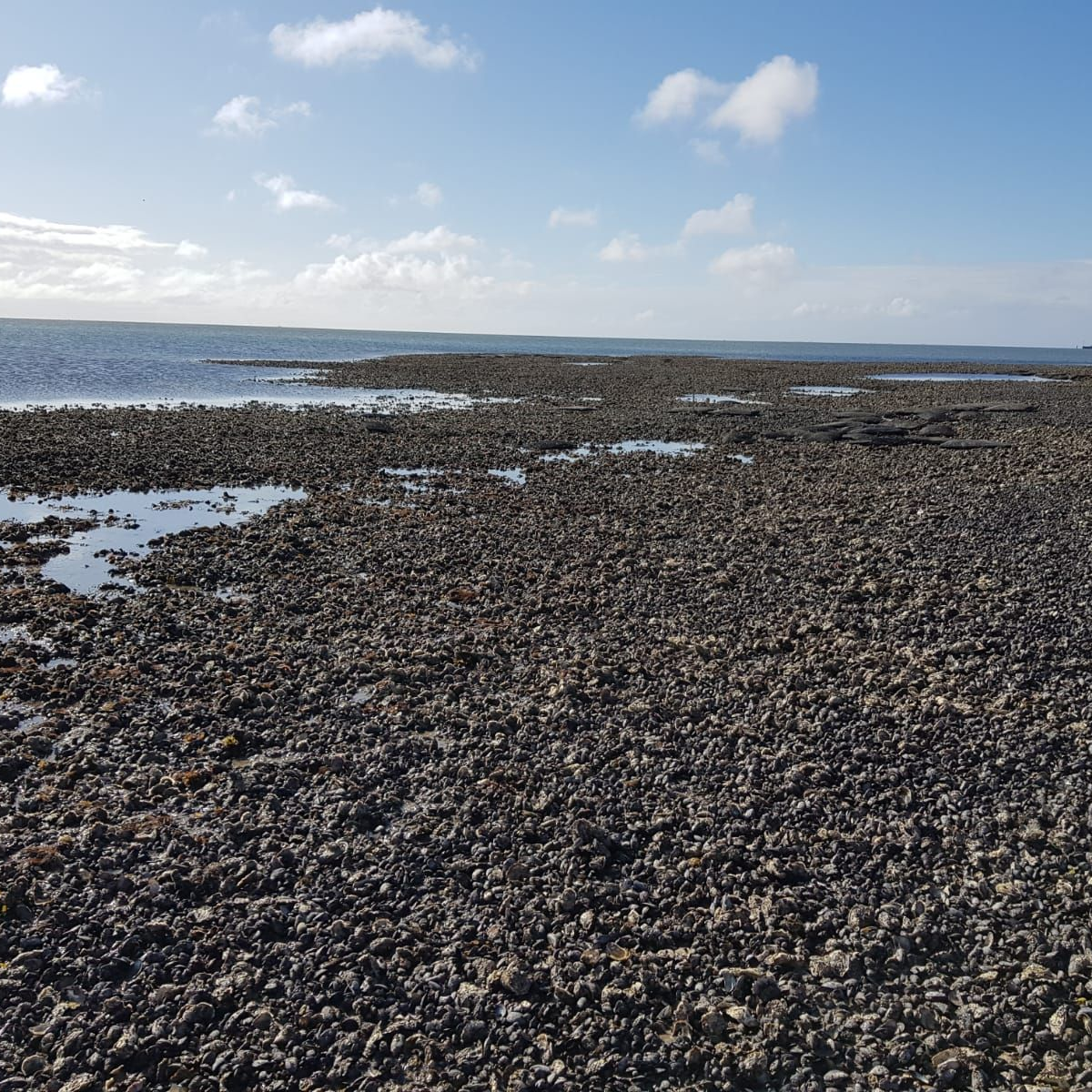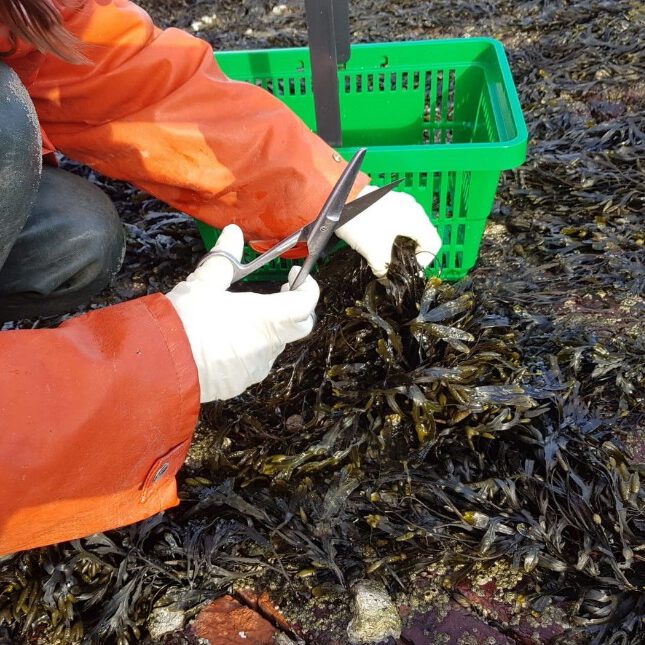Marine Habitats
Blue Mussel (Mytilus edulis)
Mussels are collected at two locations on the North Sea on a regular basis using a standardized sampling procedure. At the Jade Bight, this sampling is carried out every two months, at the Sylt site every other year in the same monthly cycle. A fixed number of mussels with a certain minimum length is collected by hand from the underlying substrate at each location. The sample is deep-frozen on site using liquid nitrogen. Mussels are also sampled twice a year from the Baltic Sea, using a ship with a dredge (trawl net).
The same approach as for the zebra mussel is used to characterize the plankton communities surrounding the mussels. In addition, the associated bacterial community is characterized. The samples are largely available as annual homogenates. Both North Sea locations (Sylt and Jade Bight) are being analyzed. Annual homogenates from 1985-2019 are available for most samples, and two-month homogenates for 2017-2019. All existing samples – 100 in total – are analyzed. Two amplicons are sequenced for each sample, increasing the number of samples processed to 200.


Bladderwrack (Fucus vesiculosus)
At the sampling locations on the North Sea (Sylt and the Jade Bight), not only mussels but also bladderwrack, a brown alga that is widespread on European coasts, is sampled. At the Jade Bight, this sampling is carried out every two months, at the Sylt site every other year in the same monthly cycle. Bladderwrack is also collected twice a year on the island of Rügen on the Baltic Sea. Sampling of bladderwrack was suspended from 2013-2020 and has only become routine again since 2021, so samples are missing from those 7 years. A set amount of bladderwrack is collected at each location. The seaweed is separated from the underlying substrate above the adhesive foot using sterile scissors. On site, the sample is stored in a stainless steel vessel over liquid nitrogen.
A standardized metabarcoding protocol is used to characterize the bacterial communities of seaweed. This work follows ongoing work at Trier University characterizing the seaweed metazoan community. All seaweed samples from three locations (Jade Bight, Sylt and Baltic Sea) are being examined. These samples (63 in total) cover a time series from 1985-2013. Three more samples from 2021 will be included. A 16S amplicon will be sequenced for each sample.


